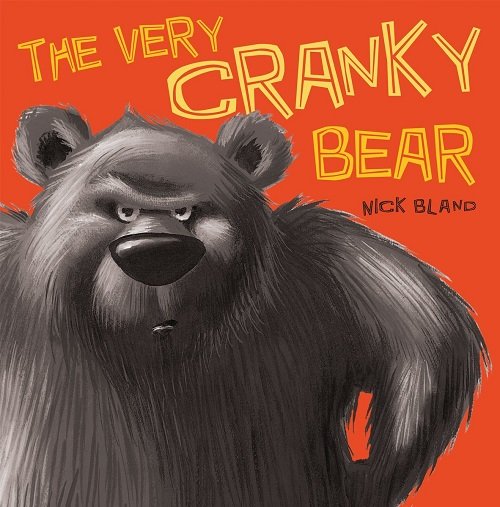
The Very Cranky Bear
- adjectives
- describing
- narrative retell
- problem solving
- rhyme
Review
In the jingle jangle jungle four friends - Moose, Lion, Zebra and Sheep - go into a cave to escape the cold and rainy weather, but little do they know a bear is fast asleep in there. When they accidentally wake him up, the cranky bear chases the animals out of the cave. The four friends must think of a way to cheer the bear up so he will let them back in the warm, dry cave. Zebra, Moose and Lion think they have the ideal plan, but it ends up making the bear even crankier! In the end, it’s the thoughtful sheep who comes up with the perfect solution.
The Very Cranky Bear is a humorous, rhyming story with an important message of listening carefully to your friends’ needs and thinking of problems from their point of view. The book approaches negative emotions in an age-appropriate way, providing opportunities for children to discuss what makes them feel cranky.
Nick Blank uses a range of adjectives to add descriptive detail to the story, making The Very Cranky Bear an excellent model text for this purpose. The bold and engaging illustrations make describing the animals lots of fun, especially the picture of Bear dressed up like the other animals! There are lots of discussions to be had about problem-solving, such as “what would you do in this situations?”, “does the animals’ first solution work?” and "what did sheep do differently?” Lastly, this story is an ideal choice for targeting narrative retell as it contains all the essential story grammar elements.
For further speech and language targets in The Very Cranky Bear, see the list below.
Book Details
Narrative Structure: Complete Episode ; True Narrative
Story Plot: Conquering The Monster
- animals - jungle, wild, bear
- emotions
- empathy
- places - jungle, cave
- point of view
- selflessness
- thoughtfulness
Speech and Language Targets
- /b/ - bear, big, bushes, bag
- /n/ - gnashed, rainy, lion, golden, mane, chin, plain
- /r/ - rainy, roar, ran, furry, worried
- /r/ blends - branches, friends, dreaming, cranky, grass, stripes, zebra
- /s/ - silly, moose, antlers, grass
- /s/ blends - stomped, stormed, stuffed, sleep, stripes
- voiced /th/ - the, them, that, there, they, then, those
- unvoiced /th/ - thoughtful, underneath, teeth
- adjectives (e.g. marvellous antlers, golden mane, fantastic stripes)
- conjunctions (and)
- regular past tense
- identifying parts (of animals)
- describing
- explaining means to a goal
- making inferences (character emotions)
- emotions
- empathy
- friendship
- listening skills
- problem solving
- character description
- setting
- weather
- sequencing
- initiating event
- problem
- plans
- feelings
- resolution
- moral
- dialogue
- direct character speech
- rhyme
Book Info
Published by Scholastic Australia in 2008 (ISBN: 9781741691344)

